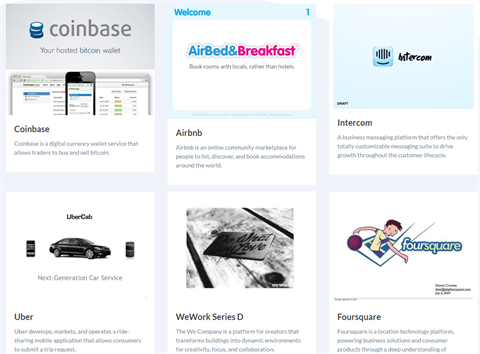It's never too early to start your pitch deck!

What is a pitch deck?
It is simply a series of presentation slides that “pitches” your company to potential investors or other audiences. Going through the process to distill what it is you want to achieve with your business idea into 10 slides is no easy feat however.
The idea of the pitch is to introduce this new business and promote the opportunity to be involved in its growth. It tells the story of your startup in a compelling and exciting way.
The pitch will cover topics such as:
– the problem or challenge being addressed,
– how your product solves this problem
– size of the market,
– competitors
– your winning business model
Why Pitch?
Pitching is not always used used to raise investment.
At every stage of the startup there is a reason to have a pitch deck ready. At the start you might use it to bring on board cofounders or team members.
As you develop you might need to gain partners, engage with mentors who have special expertise.
You can also use it to test the market and also to win a pitch competition or to get into an incubator program!
How to craft your pitch?
The audience and the purpose of your pitch will determine the style and format of your pitch.
Over the many years of startups being developed a few “standard” frameworks have evolved for you to base your pitch around. This is part of the Startup ‘language’, the two main types are the one sentence pitch and a pitch deck for investors – which you can adapt to suit the intended audience.
The one sentence pitch
The One Sentence Pitch is used to grab attention – as a lead generation tool – hooking people in as quickly as possible so that they get where you are coming from and want to know more.
When you pitch, you need to grab the listener’s attention quickly, and communicate all of the core elements of your idea in a clear and concise manner. In order to do this, the Founder Institute recommends using the simple one-sentence pitch format described below.
Founder Institute would like to remind you: If you can’t describe your business in one-sentence, then you don’t understand it well enough.
Pitch Deck for Investors
Choose a deck template that works for you. There are quite a few out there to base your pitch on. We just go for reputation – who has been in the business of building and supporting successful startups – and follow their advice. We have selected the Y Combinator for simplicity and The Founder Institute for more of a deep dive.
Y Combinator have a a super basic pitch deck template that they have created for businesses to raise seed funding . In terms of making the pitch deck understandable and memorable follow these basic design hacks as outlined by Kevin Hale.
Founder Institute’s outline of the Pitch Deck is comprehensive and you can use this as a basis to structure your pitch depending on what you are trying to achieve. Before you start writing, take a moment to focus on on who you are pitching to and what their needs are as well as what your ‘ask’ is a the end. That will guide the final structure and contents. The core elements of any pitch are:
- Problem: The problem you solve, who you solve it for, and the reasons why your target customer/users are frustrated with current solutions.
- Solution: How you solve the problem and the benefits of your solution.
- Product: Your product and how it works in three simple steps.
- Business Model: How you make money.
- Market Opportunity: How much money you could make if you dominate your target market.
- Competition: Your competitors and why your product is better than theirs.
- Growth: How you will acquire and retain customers, profitably, at scale, and keep your product competitive.
- Traction: Tangible proof that your customers love your product and are happy to pay for it.
- Financials: Your current best guess of how much money you will make in the next 3-5 years.
- Team: The team that has the experience and expertise to transform your opportunity into a large, profitable business.
- Funding: How much money you need and what you will do with it.
See the full article for a deep dive into each element.
Where did they start?
Starthouse has curated the largest collection of startup pitch decks, with over 600 decks for you to explore. It’s fascinating to see where some of the big names started. Do you know Tinder used to be called MatchBox?
Practice
The more you practice (with real people) the more you find out what needs to be clarified, what parts get their attention and where they loose connection. Sign up to our newsletter to find out when 6 degrees is holding our next pitching or networking event.